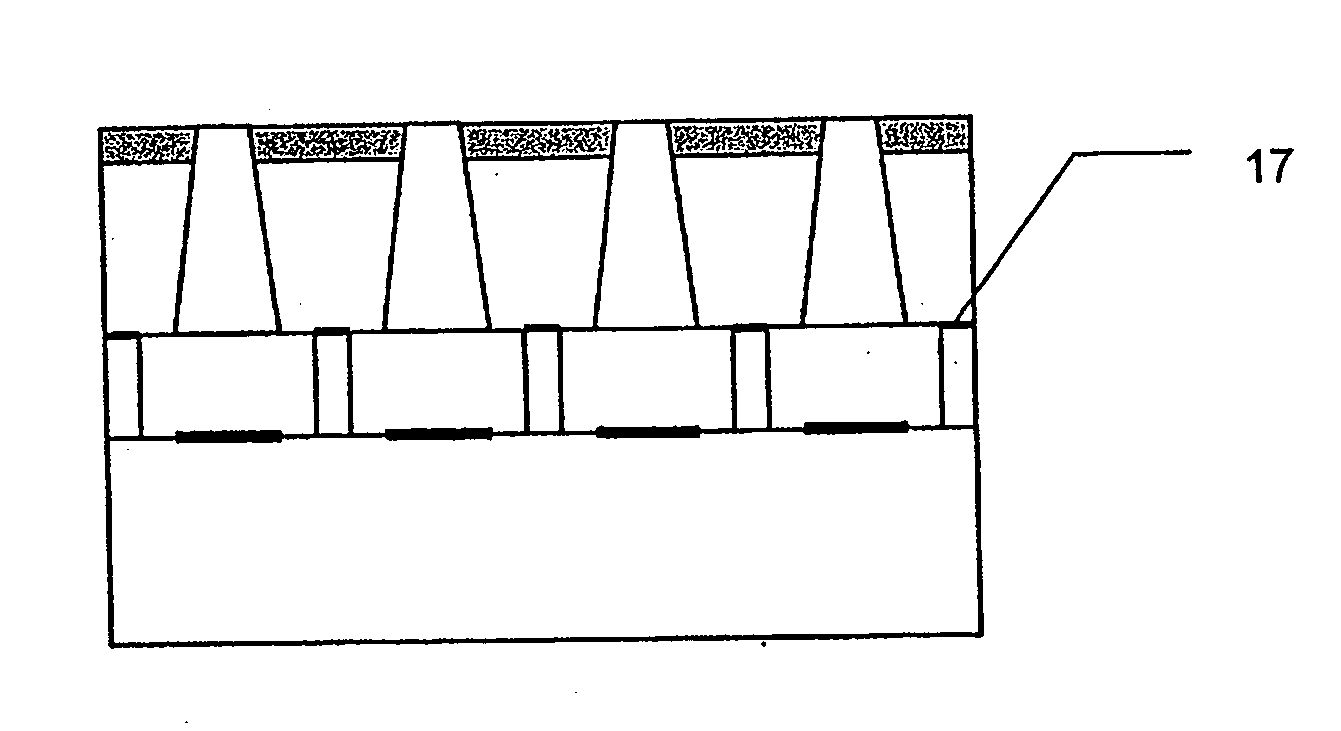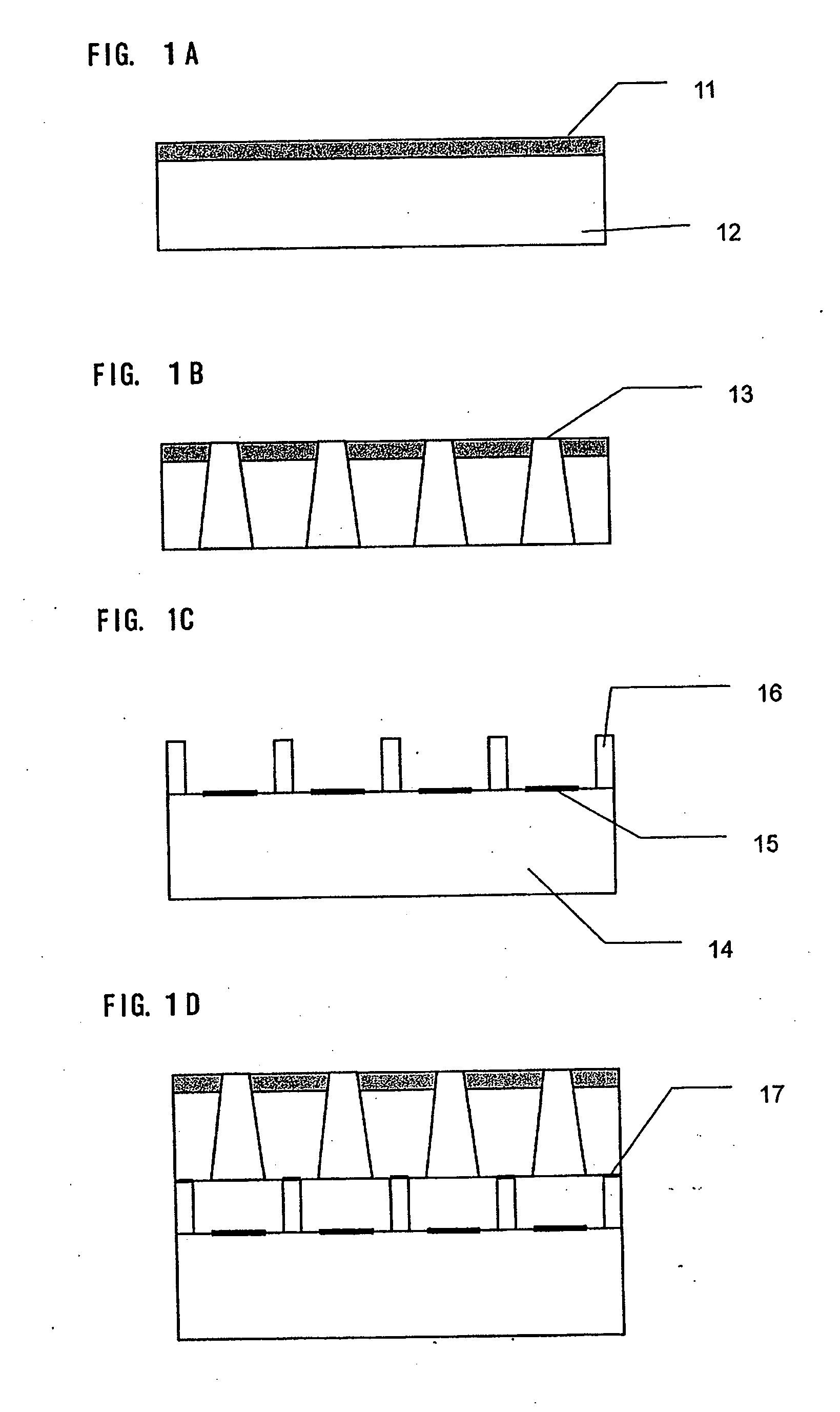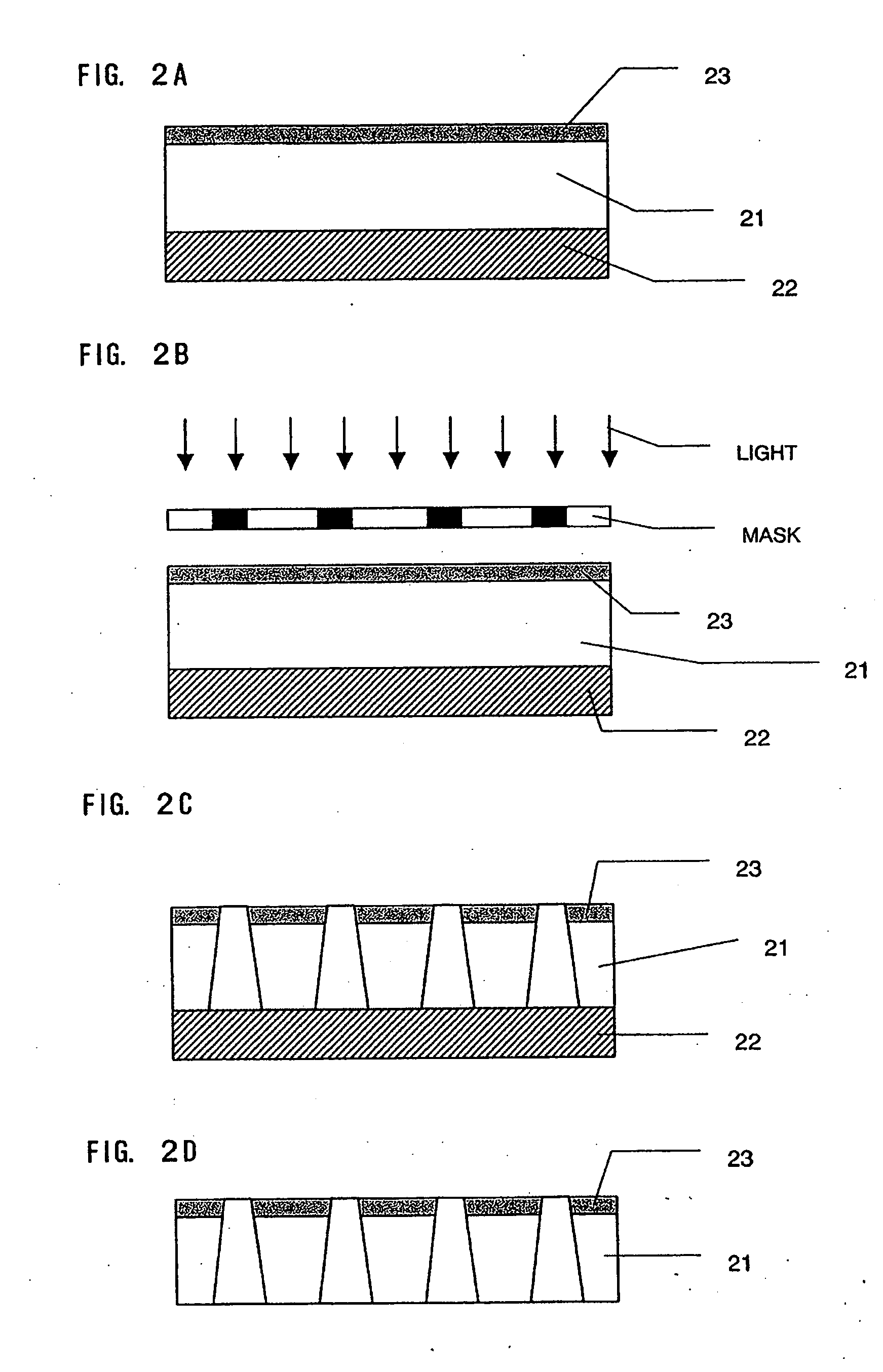Ink jet head and its manufacture method
- Summary
- Abstract
- Description
- Claims
- Application Information
AI Technical Summary
Benefits of technology
Problems solved by technology
Method used
Image
Examples
embodiment
Synthetic Example 1
[0097] A hydrolyzable condensation product was prepared according to the following procedures. Glycidylpropyltriethoxysilane 28 g (0.1 mol), methyltriethoxysilane 18 g (0.1 mol), trideca fluoro-1,1,2,2-tetrahydroctyltriethoxysilane 6.6 g (0.013 mol, equivalent for 6 mol % in total amount of the hydrolyzable silane compound), water 17.3 g, and ethanol 37 g was stirred at room temperature, subsequently refluxed for 24 hours, thus a hydrolyzable condensation product was obtained.
[0098] Furthermore, the condensation product was diluted with 2-butanol and ethanol to 7wt % as nonvolatile content, and the composition 1, which forms the liquid repellent layer was obtained.
[0099] Furthermore, the composition 1 100 g was added aromaticsulfonium hexafluoroantimonate salt 0.04 g (brand name SP170 Asahi Denka Kogyo K.K. make) as a cationic photo-polymerization initiator, and the composition 2 which forms the liquid repellent layer was obtained.
synthetic example 2
[0100] A hydrolyzable condensation product was obtained by using 4.4 g of mixtures of tridecafluoro-1,1,2,2-tetrahydroctyltriethoxysilane, and heptadecafluoro-1,1,1,2-tetrahydrodecyltriethoxysilane, instead of tridecafluoro-1,1,2,2-tetrahydroctyltriethoxysilane 6.6 g in the synthetic example 1. Other conditions were all the same.
[0101] Furthermore, the condensation product was diluted with 2-butanol and ethanol to 7wt % as nonvolatile content, and the composition 3, which forms the liquid repellent layer was obtained. Furthermore, the composition 3 100g was added aromaticsulfonium hexafluoroantimonate salt 0.04 g (brand name SP170 Asahi Denka Kogyo K.K. make) as a cationic photo-polymerization initiator, and the composition 4 which forms the liquid repellent layer was obtained.
embodiment 1
[0102] The above-mentioned compositions 2 and 4 were applied by the roll coating method on the polyamide film, the application solvent was dried at 90 degrees C. and heating for 1 minute, thus the application film was formed.
[0103] Subsequently, compositions 2 and 4 were cured by exposing by using UV irradiation equipment and heating at 90 degrees C. for 4 minutes. Furthermore, by heating at 200 degrees C. for 1 hour in a heating oven, the curing reaction was terminated and the liquid repellent layer was formed. Subsequently, the contact angle against the ink jet ink was measured as evaluation of liquid repellency using an automatic contact angle meter (Kyowa Interface Science, CA-W). Henceforth, θ a means a receding contact angle and θr means an advancing contact angle. According to examination of these inventors, the contact angle against ink, especially a receding contact angle, which has strong influence on ink removal from the nozzle surface by wiping, is desirable to be highe...
PUM
| Property | Measurement | Unit |
|---|---|---|
| Surface roughness | aaaaa | aaaaa |
| Fraction | aaaaa | aaaaa |
| Fraction | aaaaa | aaaaa |
Abstract
Description
Claims
Application Information
 Login to View More
Login to View More - R&D
- Intellectual Property
- Life Sciences
- Materials
- Tech Scout
- Unparalleled Data Quality
- Higher Quality Content
- 60% Fewer Hallucinations
Browse by: Latest US Patents, China's latest patents, Technical Efficacy Thesaurus, Application Domain, Technology Topic, Popular Technical Reports.
© 2025 PatSnap. All rights reserved.Legal|Privacy policy|Modern Slavery Act Transparency Statement|Sitemap|About US| Contact US: help@patsnap.com



